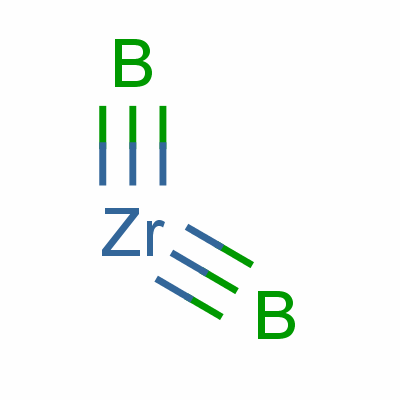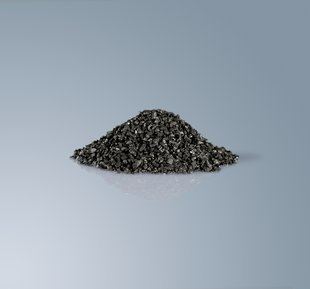Density 6.08 g/cm³ Molar mass 112.85 g/mol | Formula ZrB2 Appearance grey-black powder | |
 | ||
Hafnium carbide powder zirconium carbide zirconium nitride zirconium diboride coa technical analysis
Zirconium diboride (ZrB2) is a highly covalent refractory ceramic material with a hexagonal crystal structure. ZrB2 is an ultra high temperature ceramic (UHTC) with a melting point of 3246 °C. This along with its relatively low density of ~6.09 g/cm3 (measured density may be higher due to hafnium impurities) and good high temperature strength makes it a candidate for high temperature aerospace applications such as hypersonic flight or rocket propulsion systems. It is an unusual ceramic, having relatively high thermal and electrical conductivities, properties it shares with isostructural titanium diboride and hafnium diboride.
Contents
- Hafnium carbide powder zirconium carbide zirconium nitride zirconium diboride coa technical analysis
- Titanium diboride and zirconium diboride based systems
- Preparation
- Defects and secondary phases in zirconium diboride
- Diffusion and transmutation in zirconium diboride
- References

ZrB2 parts are usually hot pressed (pressure applied to the heated powder) and then machined to shape. Sintering of ZrB2 is hindered by the material's covalent nature and presence of surface oxides which increase grain coarsening before densification during sintering. Pressureless sintering of ZrB2 is possible with sintering additives such as boron carbide and carbon which react with the surface oxides to increase the driving force for sintering but mechanical properties are degraded compared to hot pressed ZrB2.

Additions of ~30 vol% SiC to ZrB2 is often added to ZrB2 to improve oxidation resistance through SiC creating a protective oxide layer - similar to aluminum's protective alumina layer.

Titanium diboride and zirconium diboride based systems
Preparation

Chemical vapor deposition can be used to prepare zirconium diboride. Hydrogen gas is used to reduce vapors of zirconium tetrachloride and boron trichloride at substrate temperatures greater than 800 °C.
Defects and secondary phases in zirconium diboride
Zirconium diboride gains its high-temperature mechanical stability from the high atomic defect energies (i.e. the atoms do not deviate easily from their lattice sites). This means that the concentration of defects will remain low, even at high temperatures, preventing failure of the material.
The layered bonding between each layer is also very strong but means that the ceramic is highly anisotropic, having different thermal expansions in the 'z' <001> direction. Although the material has excellent high temperature properties, the ceramic has to be produced extremely carefully as any excess of either zirconium or boron will not be accommodated in the ZrB2 lattice (i.e. the material does not deviate from stoichiometry). Instead it will form extra lower melting point phases which may initiate failure under extreme conditions.
Diffusion and transmutation in zirconium diboride
Zirconium diboride is also investigated as a possible material for nuclear reactor control rods due to the presence of boron.
10B + nth → [11B] → α + 7Li + 2.31 MeV.The layered structure provides a plane for helium diffusion to occur. He is formed as a transmutation product of boron-10—it is the alpha particle in the above reaction—and will rapidly migrate through the lattice between the layers of zirconium and boron, however not in the 'z' direction. Of interest, the other transmutation product, lithium, is likely to be trapped in the boron vacancies that are produced by the boron-10 transmutation and not be released from the lattice.
